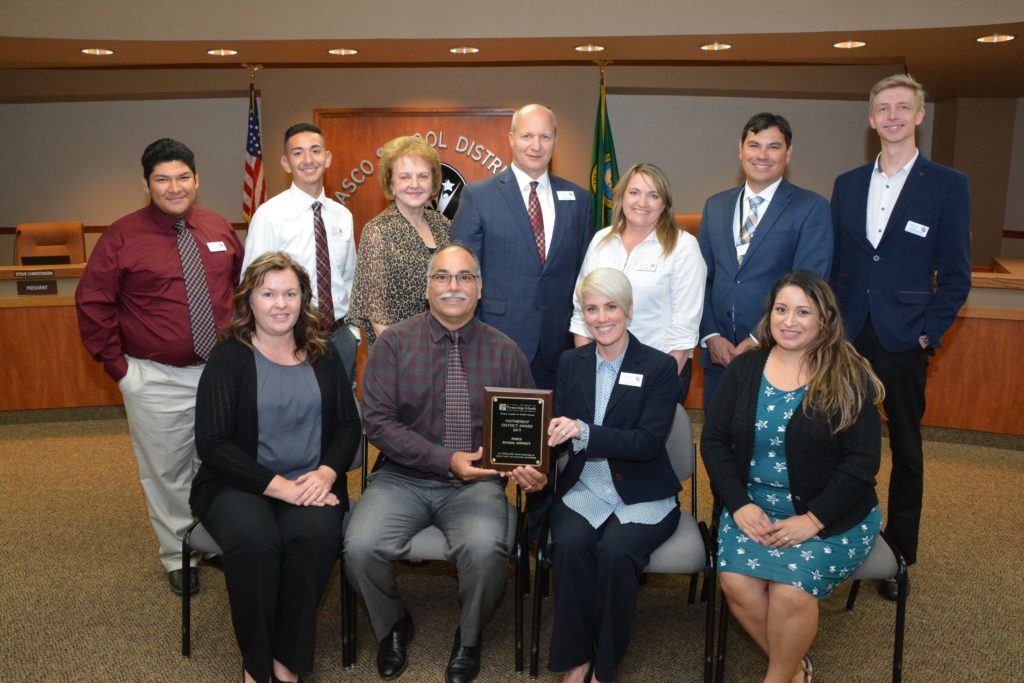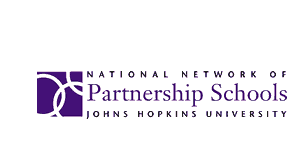Pasco School District
Pasco, WA

Row 2: Isaac Marroquin, Edgar Quiroz, Sherry Lancon, Steve Christensen, Amy Phillips, Scott Lehrman and Maksim Karazhbei
Media Communication and Platforms
District leaders for partnerships in Pasco continue to improve their support for schools’ Action Teams for Partnerships (ATPs). Last year they focused on helping ATP Chairpersons find useful communication tools to reach and engage more and different families. Throughout the year ATP videos, Dojo, Prezi, SurveyMonkey, radio stations, Pasco Minute, and Univision platforms were explored and shared with ATP Chairs and teams to help them use up-to-date communication channels. Different schools tested and rated various platforms and shared their reactions.
Several schools’ ATPs put new communication strategies into practice. For example, Maya Angelou Elementary used Facebook to conduct live ATP/PTO meetings monthly, with attendance ranging from 240-450 viewers. Emerson Elementary used Class Dojo to send subscribers (parents) a fun and dynamic video-invitation to come to an ATP meeting.
Pasco’s district leaders for partnerships examined other programs to give ATP Chairs information and tools to meet their media goals. For example, some Technology & Media classroom teachers at the high school level gave students opportunities to create content videos for schools. Training and media resources and district communication experts were available at two Cluster Meetings for ATP chairpersons. As a result, a district leader for partnerships and the ATP of the Year (2018) Ochoa Middle School were the first guests on a Spanish radio channel.
ATP in the Mirror
It is essential to evaluate the quality and progress of programs and practices of school, family, and community partnerships. There are “built in” evaluations in the NNPS Handbook for Action to help schools and districts assess progress. In addition, some districts design local tools to help their schools reflect on how well they are engaging all families in their children’s education at school and at home, and whether family and community engagement is contributing to student success in school.
In Pasco, leaders for partnerships introduced an evaluation strategy at cluster meetings for groups of ATP chairs and co-chairs. Then, the chairpersons can use the same strategy with the ATPs at their own schools. ATP in the Mirror asked chairpersons to estimate on a target (a “bullseye” chart) whether their ATPs were getting closer to or further from goals set at the start of the school year for family and community engagement. The target looked like a dartboard. The ATP leaders placed “Xs” on the target to show if their ATP was hitting their goals for partnerships or “missing the mark.” They were assessing if they still had work to do to improve activities to reach goals for good partnerships with all students’ families.
The bullseye board also identified four topics for team improvement: recruitment, engagement, organization, and inspiration. District leaders explained that if an ATP invited them to a team meeting, they would conduct workshops on one or more of these topics to help improve the ATP its productivity.
By looking in the mirror, so to speak, an ATP can identify strengths, areas for improvement, and ideas to solve emerging challenges. The reflections by chairpersons and full ATPs helped improve One-Year Action Plans for Partnerships for the next school year.
ATP in the Mirror is featured in Promising Partnership Practices 2019.

